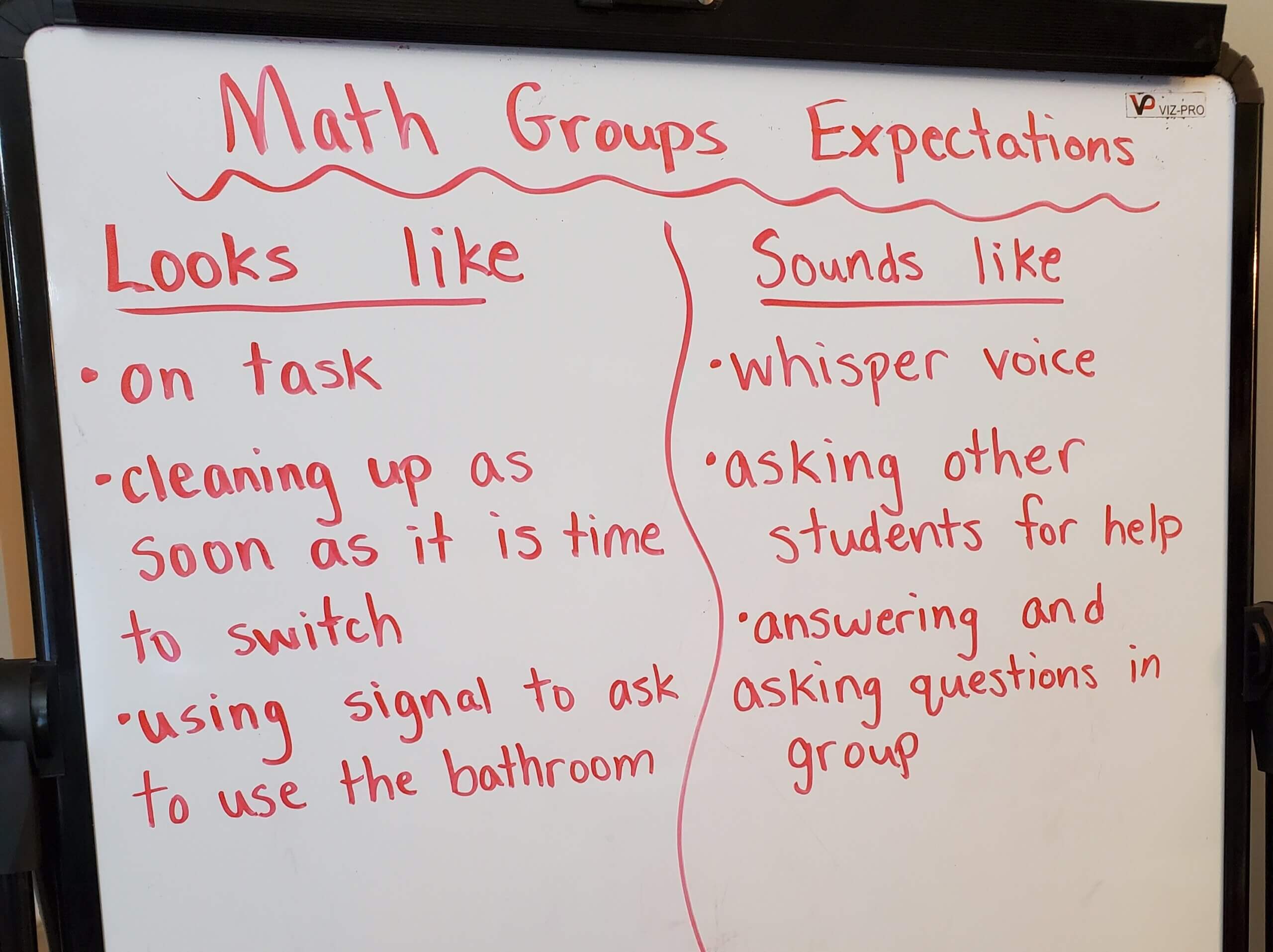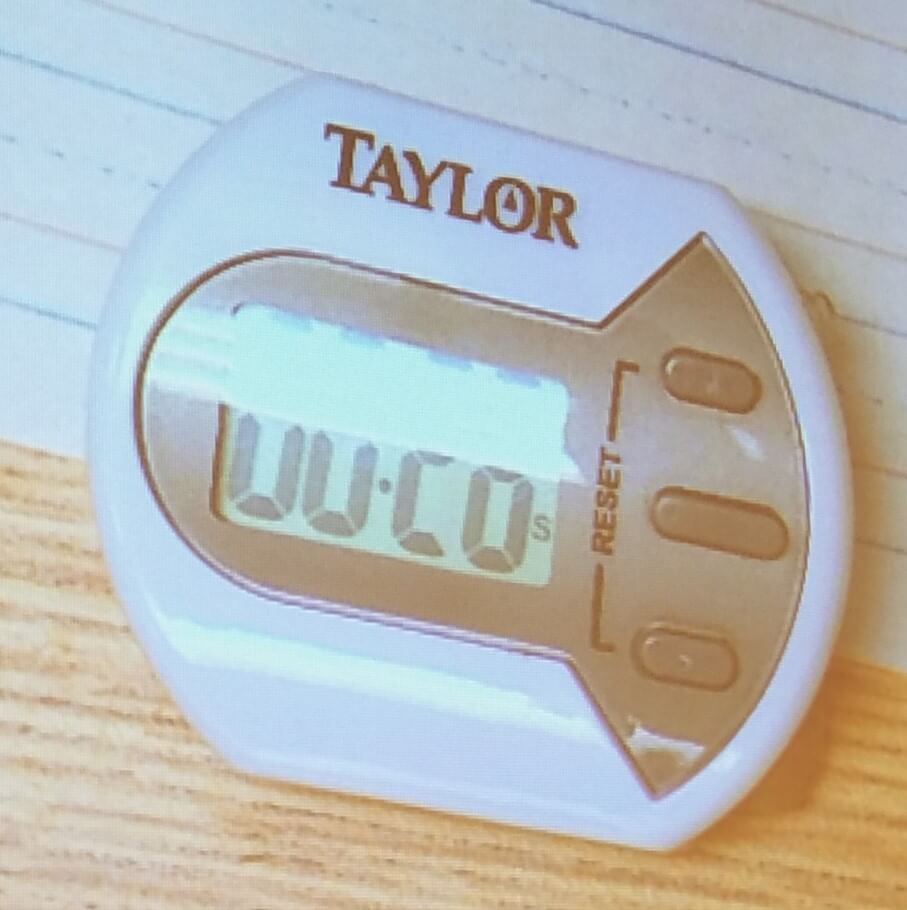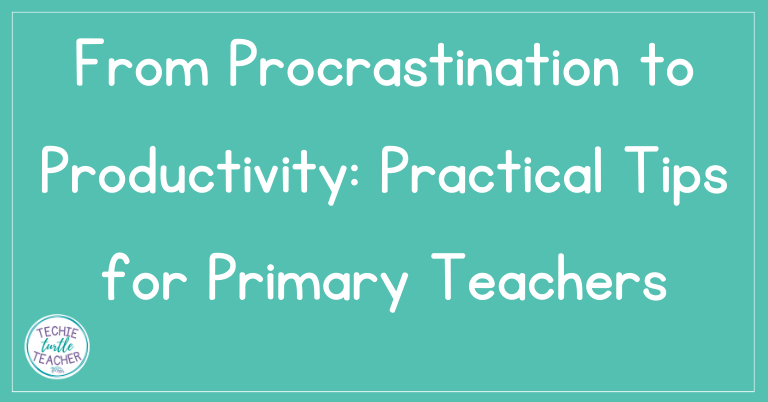Introduction to Small Group Math Instruction
Imagine a math class with 26 students, with many on different instructional levels.
How will you meet the needs of all your learners?
Whole group instruction would not be beneficial due to diverse learning needs, limited differentiation opportunities, different engagement levels, and more.
That’s where small group math instruction comes in!
If you’d like to try small groups in math, but just don’t know where to start, then keep reading.
How to Get Started with Small Group Math Instruction
Once you’ve decided that you want to try small groups in math, you need to put some guidelines in place to make sure you are successful with small group math instruction.
Things to think about:
- timing
- how to group students
- what to do in groups
- how often to meet with each group
Grab Small Group Math Guide
How Much Time to Spend with Groups
The amount of time to spend with each group will vary depending on what you are doing with the group that day.
Some days, you will want to spend an equal amount of time with your small groups.
You’ll need to determine how much time you have for groups in your math block.
Once you know the total time you have to work with your groups, you should figure out how many groups you want to meet with each day.
Then divide your time by the number of groups you will meet with. You’ll want to build in a few minutes of rotation time per group and then add an additional few minutes for wiggle room.
Example – You have a 60 minute math block, but only have 45 minutes to work with groups. You want to meet with 2 groups, so that would be 22.5 minutes per group. Build in rotation and wiggle room and meet with each group for 20 minutes.
I know I struggled with keeping track of time during small groups, but once I started using a timer, things went a lot smoother with my groups. Any timer will work, but I used this one!
Other days, you will need to introduce a new concept and will need more time with your lower students and less time with your higher students.
Then there are days where you want to give your lower students more time to practice independently and you need time to provide an extension to your higher students.
Whatever you choose for your small group math instruction, just make sure you do what is best for your students.
How to Group Students
You have a few different options on how to group your students. It really depends on your class, what you are teaching, and what you are hoping to accomplish with your small group math instruction.
- Ability Grouping:
- If you want to group based on ability, you can give an exit ticket or other short assessment on a concept and make groups based on errors made or level of understanding.
- When I use an exit ticket, I usually give a score of 0,1, or 2. Then I make the groups based on these grades. Sometimes students scoring 1s are placed in the 0 or 2 group depending on what the errors were. It all depends on the size of the groups and what needs to be taught or retaught.
- Behavior Grouping:
- Sometimes I use small groups just to separate behaviors. This helps some students focus on instruction or their independent learning when they are not with certain students. I use this grouping more at the beginning of a new standard when all students need to receive the same instruction.
- Random Grouping:
- There are times when I need to teach a concept to a smaller group of students and it is easier to just group students randomly. This is used when I haven’t had a lot of time to analyze data to group the students and I just need to make groups quickly.
- Mixed Abilities Grouping:
- I use mixed ability grouping when I want to give students a chance to learn from each other. When struggling students are always in a group with other struggling students, they do not have a model to learn from. This also applies to students who need to extend their thinking. They get a chance to teach other students and they have to go deeper with their understanding in order to explain it to someone else.
- Learning Objectives Grouping:
- I will use this type of grouping when different students need to practice different skills. This type of grouping is very similar to ability grouping, but different because students could be included in more than one group for this type of learning. This may mean some of these students do not have independent practice time, but that’s necessary every once in a while.
What to Do in Small Groups
Now that you know how to group your students and how much time to spend with your groups, you are ready to figure out what to actually do with your small groups.
Use the time to teach a new concept or skill to your groups. If you are using ability groupings, you can use exit tickets to guide your instruction based on what your students already know or what they need to work on.
Another thing to do in your groups is to review an old concept or skill. Practicing older concepts and skills is beneficial at any point during the school year. When your curriculum builds on prior knowledge, a review is necessary at certain times.
You could use your small group time to teach students how to play a game and then spend time playing the game. You can use those games as independent learning activities for future small group time after you know your students know what to do and will not interrupt you.
Check out these math fact games to use during your small group math instruction, whether playing the games in your groups or giving the games as an independent activity.
Model and Practice
Before you actually begin working in small groups, it is important to spend time modeling and practicing your rules and expectations.

Expectations will vary depending on the class, but here are some important things to think about:
- What happens when students need to use the bathroom?
- How will students know it is time to clean up and switch to the next group?
- Where will students find their materials?
- Are students allowed to use the pencil sharpener at this time?
- What is the expectation around noise level for independent students and students in your group?
Once you’ve decided on these important routines and procedures, spend time discussing these with your students. You can make a chart of what it looks like and sounds like during small group time. This will cover many of the ideas discussed above.
Now comes the fun part – modeling!
Give students a chance to model the right way and the wrong way to work independently and rotate through their groups.
Students love having permission to do the wrong thing. Make sure the same student does it the correct way after doing it wrong to help with their muscle memory.
After students model the right and wrong way, discuss what they did right and what they did wrong.
Then give all students the chance to practice doing it the right way. Make sure you point out what the class did correctly and praise them for it.
Continue practicing until you are confident your students know what to do and will do it correctly when you are working in small groups.
Don’t be afraid to come back to this step throughout the year if your students start to struggle with being independent during small group time.
Independent students help you feel successful with your small group math instruction.
Importance of Routine
It is super important to stick to a routine during small group math instruction.
Students thrive on routine and knowing what to do each day.
Being consistent and predictable reduces anxiety and fosters a sense of stability for your students.
Routine helps you, the teacher, with time management.
Your students will establish positive learning habits when they know what is expected of them and what is coming next.
Routine builds independence when students know the expectations. They don’t have to ask you for help because they know what to do.
When you use similar resources throughout the year, such as these word problem task cards for every month, it helps students recognize the routine.
Do I Have to Meet with Groups Every Day?
I saved the big question for last, so I’m glad you made it this far!
You may think that you have to meet with all of your groups every day.
But that is just not the case when using small group math instruction in your classroom.
You can meet with each group every day, but you don’t necessarily have to depending on the topic or skill you are teaching. Of course, you will need to see if your school or district has any policies on meeting with your groups every day and follow those guidelines. But if there are no guidelines, feel free to take my advice!
You definitely want to make sure you meet with each group at least every other day. Don’t just send one group to work independently all week. You need to provide direct instruction, even if it is a short amount of time.
If you have struggling students, you need to meet with that group every day.
If you decide not to meet with some of your higher level students every day, you can split your struggling students into smaller groups to give those students more of your time.
Do what works best for you and your students, but try to be somewhat consistent with your groups for the sake of routine.
Bonus Tip
If you have access to another adult in your classroom – a co-teacher, paraeducator, student teacher, parent volunteer, etc – use them to help you with your groups!
Let them work with your struggling students instead of giving them independent work time every day.
Be flexible and thankful that you have help running your small groups.
Not every teacher has another adult to support their students during small group math instruction.
Download this guide to get some ideas of what to do with your independent students.











